Sentinel-2 Overview
SENTINEL-2 is a European wide-swath, high-resolution, multi-spectral imaging mission. The full mission specification of the twin satellites flying in the same orbit but phased at 180°, is designed to give a high revisit frequency of 5 days at the Equator.
SENTINEL-2 carries an optical instrument payload that samples 13 spectral bands: four bands at 10 m, six bands at 20 m and three bands at 60 m spatial resolution. The orbital swath width is 290 km.
The twin satellites of SENTINEL-2 provides continuity of SPOT and LANDSAT-type image data, contribute to ongoing multispectral observations and benefit Copernicus services and applications such as land management, agriculture and forestry, disaster control, humanitarian relief operations, risk mapping and security concerns.
Instrument Payload
Each of the satellites in the SENTINEL-2 mission carries a single payload: the Multi-Spectral Instrument (MSI).
Related Content:
Source:
https://sentinels.copernicus.eu/web/sentinel/missions/sentinel-2/overview
Heritage
The spectral band configuration of the SENTINEL-2 mission arose as a result of consultation with the user community during the design phase. The existing Copernicus/GMES Service Elements (GSEs) services were developed around the use of LANDSAT and SPOT wavelengths, and the service requirements for SENTINEL-2 have these at their core.
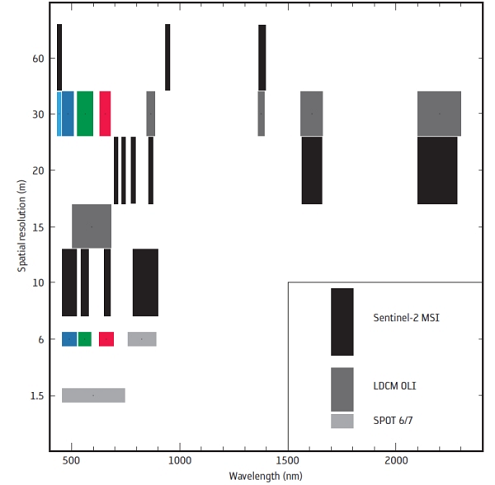
Narrowing the width of the SENTINEL-2 spectral bands limits the influence of atmospheric constituents, including water vapour. The original LANDSAT Near Infra-Red (NIR) band (760-900 nm) was found to be heavily contaminated by water vapour and not sensitive enough to parameters such as soil iron oxide content. The narrowness of the 8a band at 865 nm in the NIR is designed to avoid contamination from water vapour yet still be able to represent the NIR plateau for vegetation and be sensitive to iron oxide content for soil.
Precise aerosol correction of acquired data is enabled by the inclusion of a spectral band in the blue domain at 443 nm (Band 1) in the SENTINEL-2 configuration. The 443 nm band was used in previous missions: for the calculation of the ENVISAT MERIS Global Vegetation Index (MGVI), and in atmospheric corrections for NASA’s MODIS sensor.
Due to its potential impact on reflectance values, its use as an indicator in weather forecasting and its role in the trapping of incoming solar radiation, the presence of cirrus cloud needs to be addressed. Adding a spectral band at 1 375 nm (band 10) enables cirrus detection. The correction of data for thin cirrus can be managed using Visible to Near Infra-Red (VNIR) band information. This band is included in the MODIS instruments as band 26, and its is used in current US multispectral missions such as LANDSAT-8 and the Visible Infrared Imaging Radiometer Suite (VIIRS).
Source:
https://sentinels.copernicus.eu/web/sentinel/missions/sentinel-2/heritage
Thematic Areas and Services
The SENTINEL-2 mission requirements for a twin-satellite, high revisit frequency, high resolution image will support Copernicus programmes. Observation data acquired from the SENTINEL-2 mission will be utilised by services such as:
Source:
https://sentinels.copernicus.eu/web/sentinel/missions/sentinel-2/thematic-areas-and-services


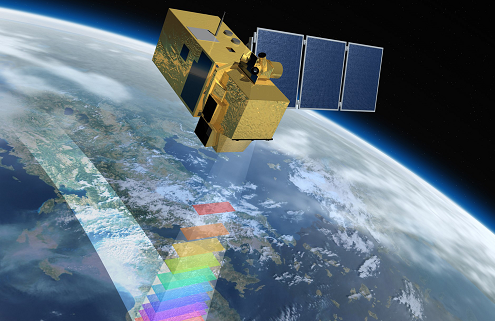 https://sentinels.copernicus.eu/
https://sentinels.copernicus.eu/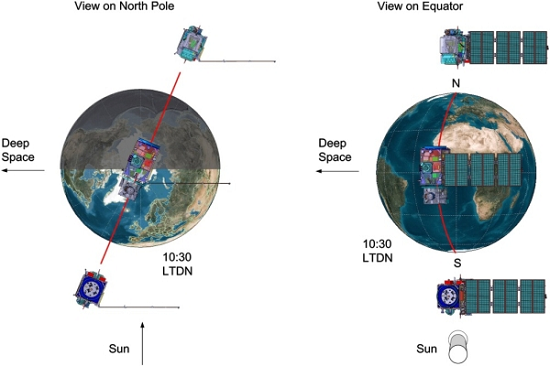
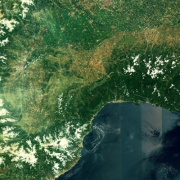 https://sentinels.copernicus.eu/
https://sentinels.copernicus.eu/ 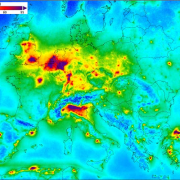
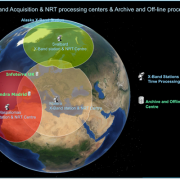
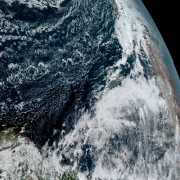
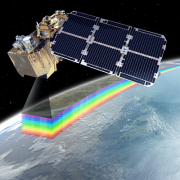
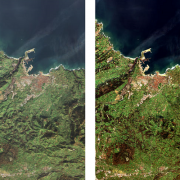 https://sentinels.copernicus.eu/
https://sentinels.copernicus.eu/ 
 https://sentinels.copernicus.eu/
https://sentinels.copernicus.eu/
Leave a Reply
Want to join the discussion?Feel free to contribute!